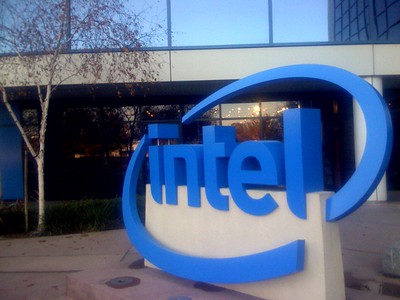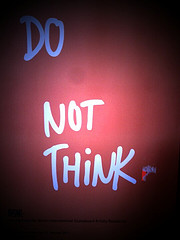|
|
|
Tuesday, March 17th, 2020

A couple of years ago I wrote
A corporation isn’t an entity at all. It’s a group of people, with shared values, all moving in the same direction, united in a shared vision and their efforts to reach a common goal.
Lou Gerstner, who remade the culture at IBM, most famously said,
I came to see, in my time at IBM, that culture isn’t just one aspect of the game, it is the game.
The culture continued to change when Sam Palmisano took over.
…the biggest breakthroughs are a result of changing the business model and the processes and the culture.
Microsoft’s Steve Ballmer learned the hard way that culture can’t be changed by edict, whereas Satya Nadella’s approach succeeded.
Over the last year, 110,000 strong Intel has been changing under the leadership of Robert Swan, who considers the cultural change necessary for its survival.
Its culture badly needed an overhaul, and its 110,000 employees needed to confront issues more openly.
“If you have a problem, put it on the table,” said Mr. Swan, 59, who was promoted to the top job a year ago and has since embarked on a campaign to shake up the Silicon Valley giant.
His efforts remain a work in progress. But the changes — some of which lean on the precepts of Andrew S. Grove, the former Intel chief executive who coined the credo “Only the paranoid survive” — are Intel’s biggest attitude adjustment in decades.
The underlying cause is the same as Gerstner and Nadella faced at their companies: complacency.
Complacency, from years of dominating their markets, and silos, from internal distrust and myopic communications.
Intel was the same.
Intel also had deeply rooted problems reflecting its years of dominance, Mr. Swan said. Managers, complacent about competition, battled internally over budgets. Some of them hoarded information, he said.
These are the same problems that companies of all sizes face.
No matter how dominant times change and competitors can seize the day.
While success is often seen as a case of “us” vs. “them” it’s crucial to remember that “us” includes customers, partners and all parts of the company.
Image credit: Aaron Fulkerson
Posted in Culture | No Comments »
Thursday, June 21st, 2018

I have been pretty busy lately and am not proud of it. Most of my time is taken up with mundane tasks, but they do keep me occupied.
I have small children so a successful day involves my wife and I getting a chance to catch up on laundry and dishes.
I also have the demands of work, which is good, because wouldn’t you rather have that than no work at all?
However, busy is also a euphemism that whatever you’re working on isn’t truly that important.
When I have work or friends that ask for my time and I say I am busy it is typically a polite way of saying I don’t want to do it or they are not a priority.
In aggregate, we see this as a society where there are silos of people who have only a few select relationships and follow a set pattern.
Those workaholics who are always at the office are often celebrated by society and condemned by those that work for them. I had a boss years ago who worked all the time and expected those below them to do so as well. I hated it.
However, I have followed a pattern lately where I am in that same condition.
I work a lot but feel like nothing is getting done.
I have been in this place before and typically the way I get out is by setting small priorities that I can work towards and build upon that.
How do you get out of the hamster wheel of work and become productive?
Note that HBS claims there is some good that can come of it.
Image credit: Roban Kramer
Posted in Personal Growth, Ryan's Journal | No Comments »
Monday, November 13th, 2017
It’s amazing to me, but looking back over more than a decade of writing I find posts that still impress, with information that is as useful now as when it was written.
Golden Oldies are a collection of what I consider some of the best posts during that time.
Who’d a thunk it? A world I wrote about 5 years ago that I hoped I wouldn’t live to see has already happened and I’m still here. Bummer.
Read other Golden Oldies here.
 Two stories today made me really happy. Two stories today made me really happy.
Happy that I won’t be around to see the world that the Silicon Valley mentality is working frantically to make happen. (I say ‘mentality’ because startups are all over as is the mindset described.)
It’s a world of instant solutions, from quasi-immortality, postmortem tweets from soon-to-be-launched LivesOn, to futurist Ayesha Khanna’s idea for smart contact lenses that would make homeless people disappear from view—out of sight/out of mind.
Solutionists err by assuming, rather than investigating, the problems they set out to tackle. Given Silicon Valley’s digital hammers, all problems start looking like nails, and all solutions like apps.
And then there is Seesaw, which allows you to “crowdsource absolutely every decision in your life” and practically guarantees siloed, homogenized attitudes over the long-term.
The drive seems to be to avoid thinking in general, let alone any of the less comfortable deep thinking required to mature and develop anything vaguely resembling wisdom.
Leszek Kolakowski argued that, given that we are regularly confronted with equally valid choices where painful ethical reflection is in order, being inconsistent is the only way to avoid becoming a doctrinaire ideologue who sticks to an algorithm. For Kolakowski, absolute consistency is identical to fanaticism.
Or as Emerson said long before the rise of today’s technology, “A foolish Consistency is the hobgoblins of little minds, adored by little statesmen, philosophers, and divines. With consistency, a great soul simply has nothing to do.”
The main problem with so many innovators is that they want to solve problems with an algorithm, which ignores the entire messy human equation; much like medicine desperately wants to believe that one-dose-fits-all.
Nor, in the rush to innovate, do they give much thought as to the longer-term effects of their miracles.
The interactive dialog provided by digital media was hailed as a way to draw millions more into the dialog, which sounds great until you look at the real effect of negative comments on stories.
Comments from some readers, our research shows, can significantly distort what other readers think was reported in the first place. (…) The results were both surprising and disturbing. Uncivil comments not only polarized readers, but they often changed a participant’s interpretation of the news story itself.
Turns out it’s not so much the comment, but the tone that has the greatest effect.
So. No discussion, no disagreement within your little world, no ethical dilemmas, no deep thinking, mental struggle, stretching or growing.
Maybe no innovation.
Is this the world in which you want to live?
Image credit: Igor Schwarzmann
Posted in Golden Oldies, Innovation, Personal Growth | No Comments »
Monday, September 25th, 2017
It’s amazing to me, but looking back over more than a decade of writing I find posts that still impress, with information that is as useful now as when it was written.
Golden Oldies are a collection of what I consider some of the best posts during that time.
Everybody pretty much agrees that the culture of tech companies need to change. (The focus used to be on Wall Street. It never changed, but the focus did and tech is the new, very visible poster boy of bad culture.) It’s also agreed that changing a company’s culture isn’t simple — and it certainly isn’t done by proclamation.
Read other Golden Oldies here.
 I’ve written many times about the importance of breaking down both horizontal and vertical silos (for more click the silo tag), but I don’t believe it can be done with an edict—even if that edict comes from Steve Ballmer. I’ve written many times about the importance of breaking down both horizontal and vertical silos (for more click the silo tag), but I don’t believe it can be done with an edict—even if that edict comes from Steve Ballmer.
This is especially true at a company like Microsoft, where the silos were intentionally built decades ago as part of the corporate structure.
Vertical silos, by nature, create, at the least, rivalry, but, more often, an “us against them” mentality within each silo.
For thousands of Microsofties, that’s the only cultural world they have known; many of them grew up in it, both in terms of years and promotions.
Changing culture is recognized as the most difficult organizational change any company, no matter the size, can undertake.
And one of the greatest error’s a CEO makes is thinking that all he needs on board is his senior staff the rest of people will fall in line.
For most companies, let alone one the size of Microsoft, terminating managers and workers that don’t fall in line isn’t even an option, since there is no way to replace them.
Yet having large numbers of your workforce on different cultural pages is a recipe for disaster.
The results of Ballmer’s changes will unfold over the next couple of years—in spite of Wall Street’s quarterly focus.
Changing culture is tremendously difficult; Charlie Brown didn’t pull it off at AT&T; Lou Gerstner said it was the most difficult part of turning around IBM.
Do you think Ballmer will succeed?
Image credit: Tobyotter
Editorial note: The answer was ‘no’ and Ballmer left Microsoft 6 months later.
Posted in Change, Culture, Golden Oldies | No Comments »
Tuesday, September 24th, 2013

What could Larry Page’s Google possibly have in common with Steve Ballmer’s Microsoft?
Would you believe corporate culture?
Google, long held up an example of great culture is, in fact, as political and siloed as Microsoft.
Not only similar siloed cultures, but a similar approach to changing them.
Ballmer believes that a deeply entrenched culture can be changed by edict and apparently Page does, too.
Page laid down the law: “If you keep fighting, we’ll be very happy to send you to the competition.
“During the speech, one of the executives who was in the room turned to a friend and whispered:“Did he just say, ‘zero tolerance for fighting? I’ve been here for years. All we do is fight.”
If Page is serious about the ‘change or else’ approach you can count on seeing high turnover at Google.
But don’t hold your breath, because words don’t always mean what they say.
Words are interpretive, so people tend to assign their own meanings and put their own spin on what is said.
Says a source who heard the Larry Page sermon at the Carneros Inn: “What he meant by ‘zero tolerance for fighting’ is don’t go overboard.”
This source says there is a “healthy way” to fight at Google.
“The healthy way to fight is to wear two hats.”
“You’ve got to wear your YouTube or Android hat,” the source says. “But the mature executive at Google knows when to put on the Google hat.”
Politics and infighting can only exist if they are openly accepted or covertly tolerated.
As one longtime Google executive put it: “If the princes [are at] war, it’s because the king tolerates it.”
Who knew?
Flickr image credit: mshamma
Posted in Ducks In A Row | No Comments »
Monday, September 9th, 2013
 Companies that allow silos risk seeing divisions and departments that fight each other instead of focusing how each can best contribute to the company’s success—think Microsoft. Companies that allow silos risk seeing divisions and departments that fight each other instead of focusing how each can best contribute to the company’s success—think Microsoft.
Globally, politics has become dominated by ideological silos and the wealthy believers who funnel rivers of money to their pet ideologues—think US Congress.
Several years ago a couple of startups gave the college-bound a way to curate their roommates, so they could be sure not to be exposed to ideas, attitudes or upbringing not in sync with their current thinking.
Mangers have been doing this for decades by thoughtlessly hiring people like themselves, so they can stay within their personal comfort zones.
Every article I read tells me to “sign in and see what your friends are reading” or buying/thinking/doing/voting.
Dozens of new apps offer to filter your information/experience/travel plans/etc. based on what “people like you” think/did/own/bought.
The result of all this curation by like-minded people is a constant narrowing of experiences, therefore attitudes and thoughts.
That narrowing leads to an inability to understand those not like us, which, in turn, kills compassion, i.e., the ability to walk in the other person’s shoes.
The end result is a rise in all forms of bigotry, not just people, but food, places, cultures, religions, politics—the list is endless.
I’m not saying there isn’t value in curation, especially considering the tsunami of information that engulfs everything in its path.
Just be sure a large chunk of the recommendations come from people NOT like you.
Flickr image credit: SalFalko
Posted in Communication, Culture, Personal Growth | No Comments »
Wednesday, July 24th, 2013
 When Microsoft announced its much ballyhooed new strategy and resulting management changes I commented that you can’t change culture, especially an intentionally siloed culture, by edict. When Microsoft announced its much ballyhooed new strategy and resulting management changes I commented that you can’t change culture, especially an intentionally siloed culture, by edict.
I didn’t go into what seemed to me a strategy with a serious lack of solid content; these days we all know that not only is content king, but the it’s source of authenticity.
I assumed that it was my unwillingness (boredom) to read the analysis offered by media, let alone Steve Ballmer’s actual long-winded statement to the Microsofties, that made me miss it.
As has been said over and over by experts, “culture eats strategy for lunch” (breakfast, in come cases), and while clear communications is as great a focus for me as culture, I just couldn’t make myself read it.
Fortunately, Wally Bock at Three Star Leadership has more patience and he offered some great analysis and comments, which are reposted below with his kind permission.
Microsoft and the Strategy of Everything
On July 13, 2013, Microsoft’s CEO, Steve Ballmer sent a lumbering, poorly edited, 2600 word email to Microsoft employees, announcing the company’s new strategy. As awful as the memo was, the strategy is worse.
When I read some of the news accounts, I felt like I was experiencing an updated version of Akira Kurosawa’s classic, Rashomon. In that film, people who participate in the same event each describe it differently. In this case, news organizations that got the same information each describe Microsoft’s new strategy differently.
The New York Times wrote about how “Microsoft Overhauls, the Apple Way.” The Wall Street Journal looked at the same announcement and said that “Microsoft Shake-Up Aims to Speed Products.” And the Mercury News told us that “Microsoft unveils major overhaul in effort to focus on mobile.”
Those very different reports sent me to the Microsoft site and the text of Steve Ballmer’s email. There, he tells us that “We are rallying behind a single strategy as one company.” Sounds good. And what might that single strategy be? Here goes.
“Going forward, our strategy will focus on creating a family of devices and services for individuals and businesses that empower people around the globe at home, at work and on the go, for the activities they value most.”
Try reading that without taking a breath or tripping over tangled syntax. Doesn’t exactly have the ring of “A PC on every desk and in every home” does it?
As I interpret it, Microsoft will make products and provide services which they will sell to individuals and businesses in the US and other countries. Egad! Is there anything Microsoft has chosen not to do?
There’s no focus at all. Being everything to everyone is usually a pretty sure way not to be much of anything to anybody.
And there’s nothing to fire up the passions that drive engagement. Would you really leap out of bed in the morning all charged up to “focus on creating a family of devices and services for individuals and businesses?”
This is not a strategy to build long term, sustainable competitive advantage. It is a strategy for rotting slowly from the inside out.
Thanks, Wally.
Flickr image credit: Masaru Kamikura
Posted in Communication, Culture, Strategy | No Comments »
Tuesday, July 16th, 2013
 I’ve written many times about the importance of breaking down both horizontal and vertical silos (for more click the silo tag), but I don’t believe it can be done with an edict—even if that edict comes from Steve Ballmer. I’ve written many times about the importance of breaking down both horizontal and vertical silos (for more click the silo tag), but I don’t believe it can be done with an edict—even if that edict comes from Steve Ballmer.
This is especially true at a company like Microsoft, where the silos were intentionally built decades ago as part of the corporate structure.
Vertical silos, by nature, create, at the least, rivalry, but, more often, an “us against them” mentality within each silo.
For thousands of Microsofties, that’s the only cultural world they have known; many of them grew up in it, both in terms of years and promotions.
Changing culture is recognized as the most difficult organizational change any company, no matter the size, can undertake.
And one of the greatest error’s a CEO makes is thinking that all he needs on board is his senior staff the rest of people will fall in line.
For most companies, let alone one the size of Microsoft, terminating managers and workers that don’t fall in line isn’t even an option, since there is no way to replace them.
Yet having large numbers of your workforce on different cultural pages is a recipe for disaster.
The results of Ballmer’s changes will unfold over the next couple of years—in spite of Wall Street’s quarterly focus.
Changing culture is tremendously difficult; Charlie Brown didn’t pull it off at AT&T; Lou Gerstner said it was the most difficult part of turning around IBM.
Do you think Ballmer will succeed?
Flickr image credit: Tobyotter
Posted in Change, Culture, Ducks In A Row | 4 Comments »
Tuesday, June 18th, 2013
 Isolation is the best way to create a culture that doesn’t work, whether the isolation is directed or benign. Isolation is the best way to create a culture that doesn’t work, whether the isolation is directed or benign.
It can be group isolation or individual, but the result is the same—silos.
I discussed some of this a few years ago when I talked about smashing silos, but the need to remind people keeps popping up.
If you believe your culture is enough to prevent isolation because you have talked about it and said it was bad then I guarantee your reality check, assuming you do one, will bounce higher than a kite.
Talking isn’t enough; it’s akin to telling your cat/dog to stay off the sofa while you’re at work.
Beating isolation in all its evil forms requires constant and active vigilance.
Flickr image credit: Glen Bowman
Posted in Culture, Ducks In A Row | No Comments »
Monday, March 4th, 2013
 Two stories today made me really happy. Two stories today made me really happy.
Happy that I won’t be around to see the world that the Silicon Valley mentality is working frantically to make happen. (I say ‘mentality’ because startups are all over as is the mindset described.)
It’s a world of instant solutions, from quasi-immortality, postmortem tweets from soon-to-be-launched LivesOn, to futurist Ayesha Khanna’s idea for smart contact lenses that would make homeless people disappear from view—out of sight/out of mind.
Solutionists err by assuming, rather than investigating, the problems they set out to tackle. Given Silicon Valley’s digital hammers, all problems start looking like nails, and all solutions like apps.
And then there is Seesaw, which allows you to “crowdsource absolutely every decision in your life” and practically guarantees siloed, homogenized attitudes over the long-term.
The drive seems to be to avoid thinking in general, let alone any of the less comfortable deep thinking required to mature and develop anything vaguely resembling wisdom.
Leszek Kolakowski argued that, given that we are regularly confronted with equally valid choices where painful ethical reflection is in order, being inconsistent is the only way to avoid becoming a doctrinaire ideologue who sticks to an algorithm. For Kolakowski, absolute consistency is identical to fanaticism.
Or as Emerson said long before the rise of today’s technology, “A foolish Consistency is the hobgoblins of little minds, adored by little statesmen, philosophers, and divines. With consistency, a great soul simply has nothing to do.”
The main problem with so many innovators is that they want to solve problems with an algorithm, which ignores the entire messy human equation; much like medicine desperately wants to believe that one-dose-fits-all.
Nor, in the rush to innovate, do they give much thought as to the longer-term effects of their miracles.
The interactive dialog provided by digital media was hailed as a way to draw millions more into the dialog, which sounds great until you look at the real effect of negative comments on stories.
Comments from some readers, our research shows, can significantly distort what other readers think was reported in the first place. (…) The results were both surprising and disturbing. Uncivil comments not only polarized readers, but they often changed a participant’s interpretation of the news story itself.
Turns out it’s not so much the comment, but the tone that has the greatest effect.
So. No discussion, no disagreement within your little world, no ethical dilemmas, no deep thinking, mental struggle, stretching or growing.
Maybe no innovation.
Is this the world in which you want to live?
Flickr image credit: Igor Schwarzmann
Posted in Innovation | No Comments »
|
 Subscribe to
Subscribe to
MAPping Company Success
About Miki 
Clarify your exec summary, website, etc.
Have a quick question or just want to chat? Feel free to write or call me at 360.335.8054
The 12 Ingredients of a Fillable Req
CheatSheet for InterviewERS
CheatSheet for InterviewEEs™
Give your mind a rest. Here are 4 quick ways to get rid of kinks, break a logjam or juice your creativity!
Creative mousing
Bubblewrap!
Animal innovation
Brain teaser
The latest disaster is here at home; donate to the East Coast recovery efforts now!
Text REDCROSS to 90999 to make a $10 donation or call 00.733.2767. $10 really really does make a difference and you'll never miss it.
And always donate what you can whenever you can
The following accept cash and in-kind donations: Doctors Without Borders, UNICEF, Red Cross, World Food Program, Save the Children
*/
?>About Miki
About KG
Clarify your exec summary, website, marketing collateral, etc.
Have a question or just want to chat @ no cost? Feel free to write
Download useful assistance now.
Entrepreneurs face difficulties that are hard for most people to imagine, let alone understand. You can find anonymous help and connections that do understand at 7 cups of tea.
Crises never end.
$10 really does make a difference and you’ll never miss it,
while $10 a month has exponential power.
Always donate what you can whenever you can.
The following accept cash and in-kind donations:
|






 Two stories today made me really happy.
Two stories today made me really happy. I’ve written many times about the importance of
I’ve written many times about the importance of 
 Companies that allow silos risk seeing divisions and departments that fight each other instead of focusing how each can best contribute to the company’s success—think Microsoft.
Companies that allow silos risk seeing divisions and departments that fight each other instead of focusing how each can best contribute to the company’s success—think Microsoft. When Microsoft announced its much ballyhooed new strategy and resulting management changes I commented that you
When Microsoft announced its much ballyhooed new strategy and resulting management changes I commented that you  Isolation is the best way to create a culture that doesn’t work, whether the isolation is directed or benign.
Isolation is the best way to create a culture that doesn’t work, whether the isolation is directed or benign.
